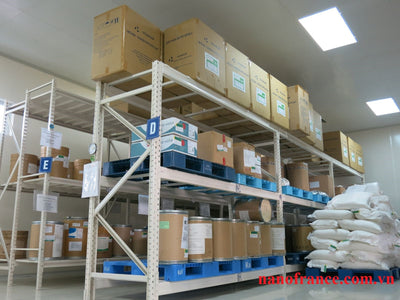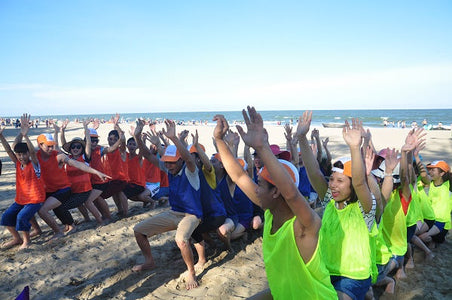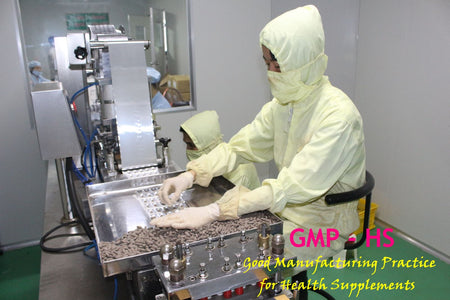Upper respiratory tract infections in infants
The upper respiratory tract includes: nose, pharynx, throat, sinuses, larynx. This is the first organ that comes into direct contact with the air, so it is easily affected by environmental factors. It can easily cause many diseases such as: rhinopharyngitis, pharyngitis, tonsillitis, otitis media... Upper respiratory tract infection is not a disease but a group of diseases. Including: colds, rhinopharyngitis, pharyngitis, sinusitis and laryngitis.

Causes of upper respiratory tract infections
Caused by viruses : Rhino virus, Corona, Adeno, Parainfluenza virus, respiratory syncytial virus RSV
Due to bacteria : Common causes are group A hemolytic streptococcus, pneumococcus, Haemophilus influenzae, some types of fungi...
Favorable factors causing upper respiratory tract infections:
- Weather: the disease often appears in cold weather, especially during the transition from winter to spring.
- Age: the younger the age, the more susceptible to the disease, under 1 year old, especially under 2 months old, are susceptible to the disease
- weak child
- Children with rickets, malnutrition, vitamin A deficiency
- Children with immunodeficiency such as: HIV, long-term corticosteroid treatment...
- Children after surgery…
- Narrow, damp housing, exposure to smoke (stoves, cigarettes, honeycomb coal...), poor hygiene...
Symptoms of upper respiratory tract infection
Upper respiratory tract infections, although they include many different individual diseases, generally have specific symptoms including: high fever, stuffy nose, runny nose, sneezing, cough, sore throat, hoarseness, loss of voice, headache, fatigue, joint pain...
Treatment principles upper respiratory tract infection
Drug treatment
- Symptomatic treatment:
- Treatment with cough suppressants, expectorants in syrup form, aerosols...
- Treatment of pain relief, fever reduction, anti-inflammatory...
- Use medication according to the child's condition and must have a doctor's prescription.
- Treat the root cause:
- Upper respiratory tract infections caused by viruses are mainly treated with symptomatic treatment. If the cause is clearly identified as bacteria, antibiotics and anti-inflammatory drugs can be used. However, antibiotics should be used with caution and under the doctor's prescription.
Non-drug treatment
- Clean nose, clear airway for children
- Adequate nutrition for babies to breastfeed adequately, increasing resistance
- Create a clean, fresh living environment…
Take care of
Children have a lot of runny nose, which can be thick and sticky, leading to stuffy nose and nasal congestion (due to increased secretions in the upper respiratory tract).
- Clear your baby's nose by using a soft, dry cloth (soft tissue is best) to avoid causing too much irritation to the nose, leading to a sore or red nose due to wiping too many times.
- Use 9‰ saline solution to drop into each nostril of the child to thin the nasal discharge, then remove the nasal discharge with a nasal aspirator, and use a clean, dry cotton swab to pick the nose again.
- Clear your baby's nose before feeding or nursing if the discharge is thick and sticky to avoid vomiting.
- Avoid overusing saline to suction the nose too much because it will cause the child's nasal mucosa to atrophy.
- Avoid giving garlic juice to children because garlic is spicy and can easily burn children's mucous membranes.
- Place the baby with his head elevated or hold him upright.
- Keep your child warm in winter, in summer there is no need to dress them too thickly, just avoid letting them lie directly in front of a fan or under the air conditioner (acceptable room temperature is > 25 degrees Celsius).

Children with fever (due to upper respiratory tract infection)
- If the child has a fever from 37.5 to below 38.5 o C
- Let the child lie in a cool room, wear thin, loose clothing.
- Give your child plenty of water to drink, cool him down with warm water (37 degrees Celsius), use a clean, soft towel to wipe his forehead, armpits and groin.
- Ensure adequate nutrition
- Monitor temperature every 30 minutes
- If the child has a fever of 38.5 o C or higher
- Continue using warm water at 37 degrees Celsius to wipe the baby.
- Give your child paracetamol (efferagan) orally or suppositories at a dose of 10-15mg/kg/time, which can be repeated after 4-6 hours if the temperature is still above 38.5 degrees Celsius.
- If the child still has a high fever after taking fever-reducing medicine, you can give the child a warm bath (wet the head) to quickly lower the temperature and avoid convulsions.
- Check your child's temperature regularly (every 30 minutes - 1 hour)
Children cough
- Cough is more a symptom of lower respiratory tract infection, cough in upper respiratory tract infection can be due to increased secretion of phlegm or spasm of the upper respiratory tract, so depending on the mechanism, use medicine for children, do not use medicine without a doctor's prescription.
- However, mothers can give their children some safe cough suppressants such as honey for them to sip a little (every 6 hours, 1/2 teaspoon each time) or kumquat juice steamed with sugar (take kumquat, remove the water, steam for 20 minutes, squeeze out the juice) and occasionally let the child sip.
Vomiting may be due to thick phlegm or because the illness has gotten worse.
- During the process of taking care of children, if mothers see that their children vomit more, they need to notify the doctor or take the child to see a doctor immediately.
- When a child vomits, lay the child's head to one side, clean the vomit from the child's mouth, throat, and nose, dry the vomit on the child's body with a soft towel and warm water, and change the child's clothes.
- Breastfeed more often
- If your child vomits a lot, you should not give your child anti-vomiting medicine without a doctor's prescription.
- If your child vomits and shows signs of dehydration such as sunken eyes, wrinkled skin, etc., your child will become more lethargic and you need to take him or her to the doctor immediately.
Note : During child care, if the child has one of the following symptoms, notify the doctor or take the child to a medical facility for immediate examination:
- Unable to drink or breastfeed
- The disease gets worse, the child has difficulty breathing, breathes faster (over 50 times/1 minute), chest retraction... are signs of pneumonia, one of the dangerous complications of upper respiratory tract infection.
- Children have high fever for 3-5 days continuously
Prevention of upper respiratory tract infections
- For upper respiratory tract infections, prevention is the top priority, because this is a contagious disease, so limit children's direct contact with sick people, avoid factors that are harmful to the respiratory tract such as: dust, heat, hot air, toxic gases...
- Keep breast milk clean and safe from infection
- Avoid staying in air-conditioned rooms that are too cold, and avoid letting children spend long periods outdoors, especially when the weather changes seasons.
- Keeping your body warm when traveling and your neck warm when sleeping in winter are simple measures but help us prevent diseases very effectively.
- Ensure adequate nutrition, maintain a well-ventilated living environment, avoid humidity and crowded places.









